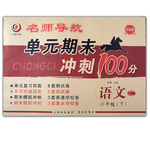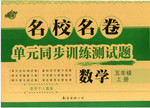题目内容
When the H1N1 virus____ at first in Mexico, no one had the least idea that it would spread so rapidly throughout the world.
A. broke off B. broke down C. broke out D. broke away
C
解析:
略

 名师导航单元期末冲刺100分系列答案
名师导航单元期末冲刺100分系列答案 名校名卷单元同步训练测试题系列答案
名校名卷单元同步训练测试题系列答案Air is an odorless (无气味的), invisible (看不见的) gas that surrounds the earth. It is everywhere on the planet. An “empty” drinking glass and an “empty” room, to give two examples, are not really empty. Each is filled with air. When the glass is filled with water, the water pushes the air out of the glass.
Air, as a gas, has no definite (明确的) shape, but, because it is matter, it takes up space. It is easy to prove that air is something that takes up space. Stuff a dry handkerchief into the bottom(底部) of a glass so that it will not fall out when the glass is turned upside-down. Push the upside-down glass; hold it straight into a jar of water till the glass is completely covered. When the glass is taken out of water, the handkerchief will be dry. The air inside the glass takes up space and keeps the water from coming in.
【小题1】What does the underlined word “Stuff” (in Paragraph 2) mean?
| A.Press tightly. | B.Take out. |
| C.Put down. | D.Turn fully. |
| A.the experiment is done in the laboratory |
| B.the experiment is done outside the room |
| C.the experiment is easily done |
| D.the experiment is carried out indoors |
( W—water; A—air; H—handkerchief )

Driving in a foreign country is always different in at least some ways from driving in your own country. Here are some general points regarding driving in New Zealand.
l Visitors wishing to drive in New Zealand do not require an international driver’s license but are required to carry their local driver’s license whenever driving.
l Vehicles drive on the left-hand side of the road as they do in Britain, Australia, and Japan. Most rental vehicles will have a sticker reminding you of this important fact.
l When the traffic light is red, you must stop. There is no left turn rule as in North America.
l New Zealand road rules follow international standards but please note that in New Zealand vehicles turning left must give way to traffic turning right.
l In general, if you are turning left (where there are give-way signs or no signs), give way to vehicles that not turning. In all other situations, give way to vehicles crossing or coming from your right.
l Seat belts must be worn at all times while driving in New Zealand. This stands for the driver and passengers. The driver is responsible for ensuring all passengers are wearing their seatbelts.
l Do not drink alcohol before driving in New Zealand—drinking and driving laws are strictly enforced.
l Speed limits are in kilometres per hour (kph), not miles per hour (mph).
Speed conversion: 1 kph equals 0.621 mph; 1 mph equals 1.61 kph.
l The speed limit on the open road is 100km/h. In towns and cities the speed limit is 50km/h. Be sure to obey all school crossing speed reductions as speed cameras operate regularly throughout New Zealand.
For further information and up to date road conditions visit: http://www.transit.govt.nz
1.What can be learned from the passage?
A. A passenger’s not wearing the seat belt has little to do with the driver.
B. There will be a reminder for drivers to remember to drive on the left side.
C. Cars passing a school in towns should drive at a speed of less than 31 mph.
D. A foreign driver is expected to have a driving license issued by New Zealand.
2.Which of the following statements correctly explains road rules in New Zealand?
A. In Figure 1, Car B must give way to Car A.
B. In Figure 2, Car B must give way to Car A.
C. In Figure 3, Car B must give way to Car A.
D. In Figure 4, Car B must give way to Car A.
 |
3.This passage is most likely ____________.
A. a travel brochure for locals
B. a website travel introduction
C. an advertisement of travel
D. a travel column in a geographical magazine
 is not just on the mainland(大陆) that the three girls have made audiences much excited. In the past year the band has passed through Taiwan, Hong Kong and even Singapore and Malaysia.
is not just on the mainland(大陆) that the three girls have made audiences much excited. In the past year the band has passed through Taiwan, Hong Kong and even Singapore and Malaysia. fans.
fans. shocked.
shocked. new factory could be disastrous.
new factory could be disastrous. _ is essential to the quality of product.
_ is essential to the quality of product.